If you are using a dual monitor setup and want to show Taskbar across multiple monitors in Windows 11, here is how you can set things up. You can show or hide Taskbar on multiple displays in Windows 11 using Windows Settings and Registry Editor. Let’s check how it’s done.
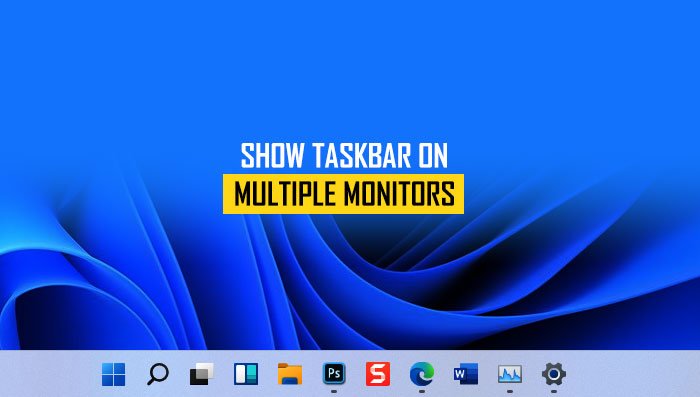
How to show Taskbar across multiple monitors in Windows 11
To show Taskbar across multiple monitors in Windows 11 using Windows Settings, follow these steps:
- Press Win+I to open Windows Settings.
- Go to Personalization > Taskbar settings.
- Expand Taskbar behaviors settings.
- Select the Show my taskbar on all displays checkbox.
- Select the opened apps icon visibility using When using multiple displays, show my Taskbar apps on drop-down list.
To learn more about these steps, continue reading.
At first, press Win+I to open the Windows 11 Settings panel. Then, go to Personalization and click on the Taskbar tab.
Here you can find a section called Taskbar behaviors. You have to click on it to manage other settings.
Once it is expanded, you can see an option called Show my taskbar on all displays. Make a tick in the corresponding checkbox to show Taskbar across multiple monitors in Windows 11.
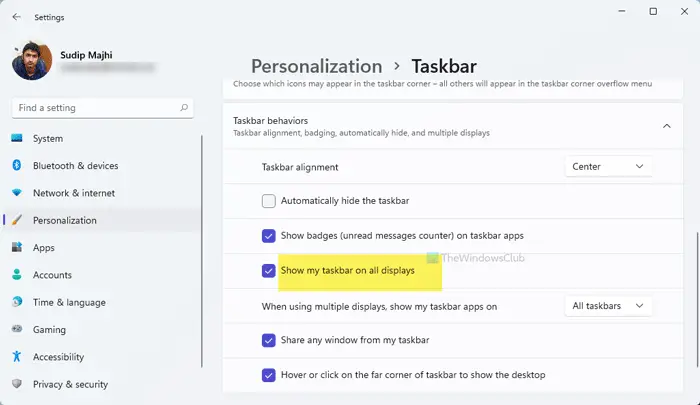
Next, you can choose whether you want to show all opened app icons on all monitors or the main monitor.
For that, expand the When using multiple displays, show my Taskbar apps on drop-down list. Here you can find three options:
- All taskbars
- Main taskbar and task where window is open
- Taskbar where window is open
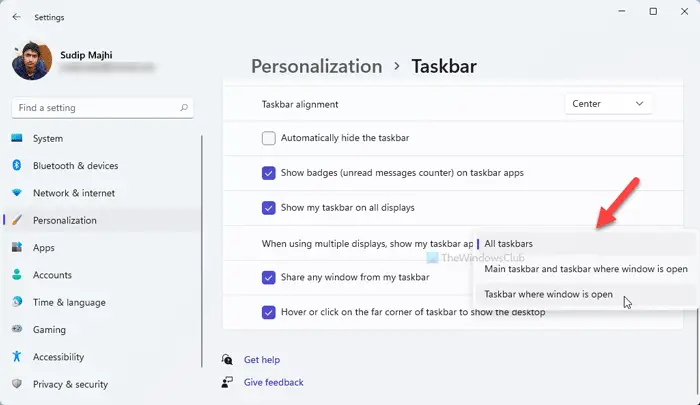
By default, it is set to All taskbars. However, you can choose any other option mentioned above.
After that, you will keep getting the Taskbar across multiple monitors in Windows 11.
Read: How to enable and use TPM Diagnostics Tool in Windows 11.
How to display Taskbar on multiple monitors using Registry
To show Taskbar on multiple monitors in Windows 11 using Registry Editor, follow these steps:
- Press Win+R to open the Run prompt.
- Type regedit and press the Enter button.
- Click on the Yes option.
- Go to Advanced in HKCU.
- Right-click on Advanced > New > DWORD (32-bit) Value.
- Name it as MMTaskbarEnabled.
- Double-click on it to set the Value data as 1.
- Click the OK button.
- Press Ctrl+Alt+Del and select Task Manager.
- Select Windows Explorer and restart it.
Let’s check out these steps in detail.
At first, you have to open Registry Editor on your computer. For that, press Win+R, type regedit and hit the Enter button. Then, click on the Yes option in the UAC prompt. After that, navigate to the following path:
HKEY_CURRENT_USER\Software\Microsoft\Windows\CurrentVersion\Explorer\Advanced
Here you can find a DWORD value named MMTaskbarEnabled. However, if you cannot find it, right-click on the Advanced > New > DWORD (32-bit) Value, and name it as MMTaskbarEnabled.
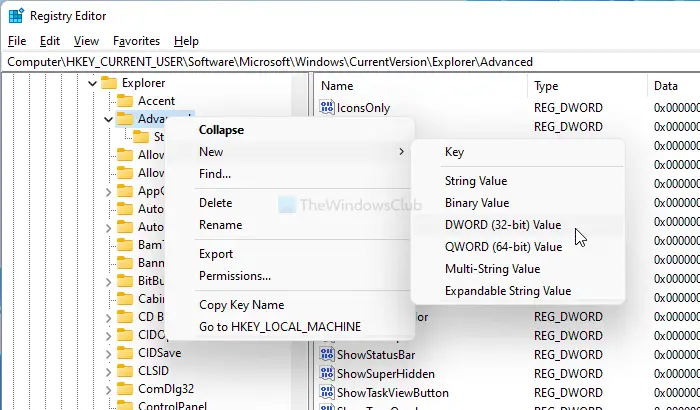
Double-click on this DWORD value and set the Value data as 1.
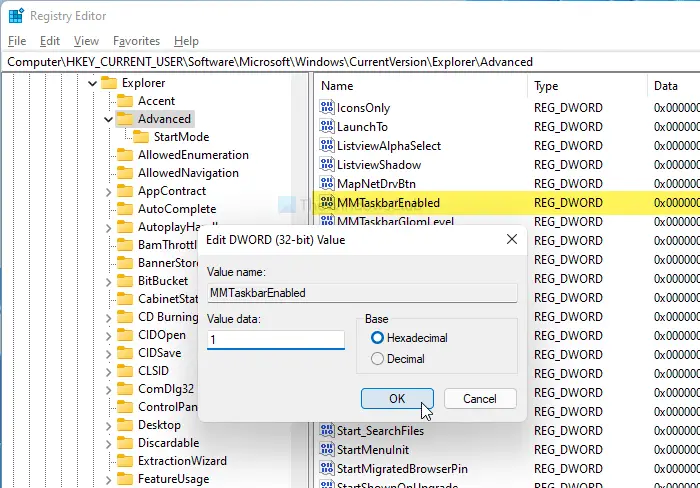
Press Ctrl+Alt+Del, and select the Task Manager option. Find out the Windows Explorer process and click on the Restart button to restart Windows Explorer in Windows 11.
After that, you can see Taskbar on multiple displays in a dual monitor setup running Windows 11.
Read: How to install the hidden Aero Lite theme in Windows 11.
However, if you want to change the behavior of the app icon, you have to create another DWORD value in the Advanced key. Right-click on the Advanced > New > DWORD (32-bit) Value and name it as MMTaskbarMode.
Double-click on it and set the Value data as follows:
- Show taskbar buttons on all taskbars: 0
- Show taskbar buttons on main taskbar and taskbar where window is open: 1
- Show taskbar buttons on taskbar where window is open: 2
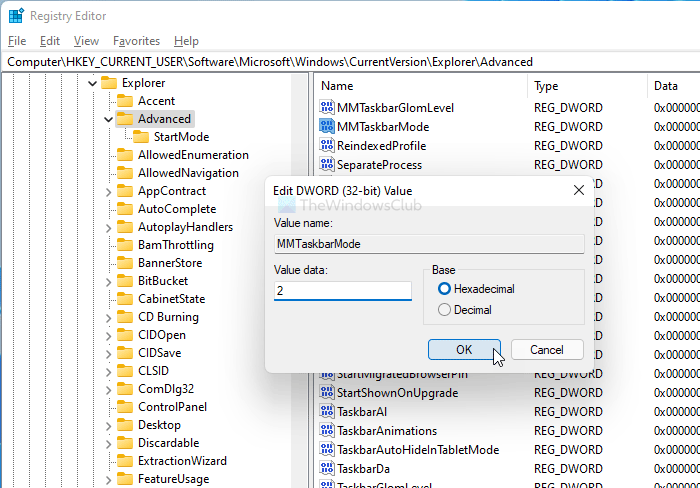
Click the OK button to save the change. At last, restart the Windows Explorer process using Task Manager.
TIP: You might want to also take a look at Ultramon Smart Taskbar, a free-to-use dual monitor software that helps Windows users with multiple display management.
That’s all! Showing or hiding Taskbar on multiple displays in Windows 11 is as simple as that!
Show taskbar buttons on all taskbars not working
If the Show taskbar buttons on all taskbars setting is not working and keeps resetting, create a Registry DWORD, name it MMTaskbarEnabled and give it a value of 1 as mentioned in this post. The Show taskbar buttons on all taskbars setting is now renamed to Show my taskbar on all displays.
Read: Remember window location on Multiple Monitors in Windows 11.